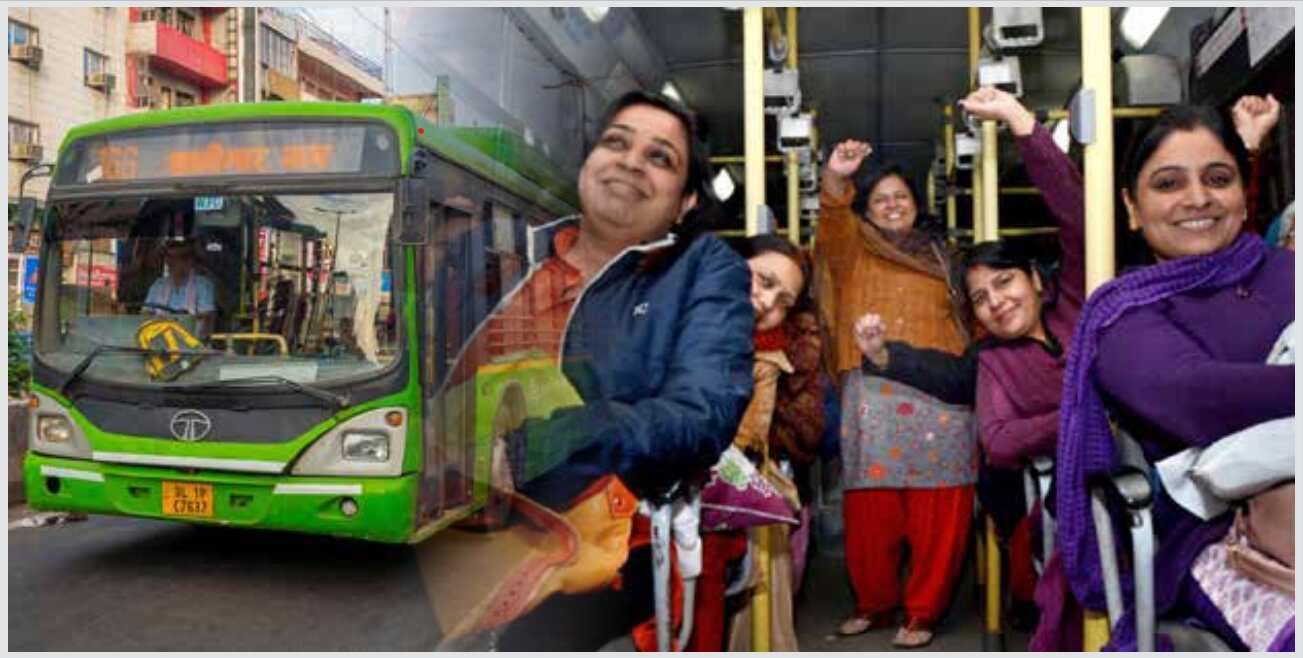Much-needed augmentation
Delhi government’s free travel scheme for women has been an empowering measure in a clime fraught with multi-layered inequalities

The debate around freebies has gained momentum in the recent past, posing several questions about the Aam Aadmi Party (AAP) government's welfare model. Kejriwal's free bus travel scheme for women, launched in 2019 in the national capital, is one of the many facilities provided to people with an aim of women's empowerment.
The Delhi government has allocated Rs 250 crores to continue the facility of providing free travel to women in Delhi Transport Corporation and cluster buses in the 2022-23 financial year.
As per the state economic survey, 217.1 million free trips were availed by women in Delhi's DTC and cluster buses in the 2021-22 financial year. Earlier, data from the Delhi government showed that the free bus ride for women scheme had helped 193.2 million female passengers to travel in DTC and cluster buses for free in 2019-20. The year-on-year growth in this regard came despite the onslaught of the pandemic. This signifies the immense popularity of the scheme.
The free travel scheme has indeed helped women gain confidence and has empowered them in several aspects. Delhi govt in its budget for 2022-23 financial year set aside Rs 280 crores for marshals in buses so that women can travel safely across the region. Parallel focus on the security of women while ramping up the number of bus rides reflects the sincerity of the government, rather than an effort to win votes.
The AAP government in Delhi has created a unique welfare model during the course of its seven years in power — prioritising investment in Delhi's citizens; and free travel scheme for women is one of them — empowering women to travel safely across the region.
There are many unsettling, startling disclosures in Oxfam's 2022 annual report on inequality in India. The number of poor doubled to 134 million as its billionaires' wealth doubled. The richest 1 per cent control 51.5 per cent of the total wealth, compared to just 5 per cent by the poorest 60 per cent of the population. All of these indications clearly suggest a picture of a nation that is more fractious and unequal.
The ruling govt in the Centre has termed provisions to poor beneficiaries as "revdi" while state-sponsored support to the rich is called "incentive". The government reduced corporate tax rates in September 2019 for domestic businesses from 30 per cent to 22 per cent and for new manufacturing businesses from 25 per cent to 15 per cent. The government put this decision into effect in just 36 hours. According to the Oxfam report, these business cuts cost the nation 1.5 lakh crore. However, Delhi government's budget has increased to over 75,000 crores even after providing several free schemes and has also been in profit.
So, we must ask this question — should we use public money in human potential and empower our women, or be used to slashing corporate taxes and corporate loan write-offs even though the disparity between the poor and the rich has grown a lot?
Views expressed are personal



